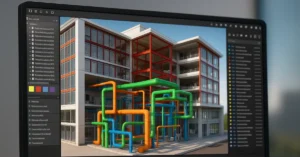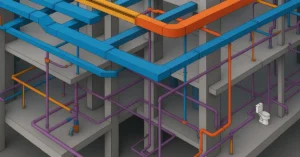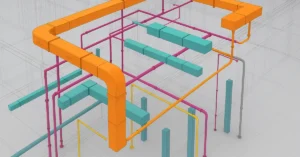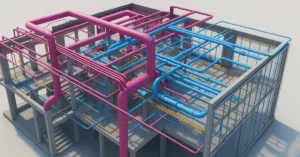Exploring Brutalist buildings in Montreal
Montreal, a city known for its blend of historic European charm and modernist influences, is home to some of the most striking Brutalist architecture in North America. These raw concrete structures, often divisive in opinion, contribute significantly to the city’s architectural landscape. Whether admired for their boldness or critiqued for their imposing forms, these buildings tell the story of Montreal’s post-war urban transformation. In this guide, we explore the most remarkable Brutalist buildings in Montreal and their significance.
What is Brutalist Architecture?
Brutalism, emerging in the mid-20th century, is characterized by the use of raw concrete (“béton brut” in French), geometric forms, and utilitarian design. Popular among institutional, governmental, and residential structures, Brutalism was embraced in Montreal during the city’s modernization efforts in the 1960s and 1970s. Today, these buildings stand as testaments to a unique architectural movement that continues to spark debate.
Montreal’s Must-See Brutalist Buildings
1. Habitat 67
Location: 2600 Avenue Pierre-Dupuy, Montreal, QC H3C 3R6
Architect: Moshe Safdie
Year: 1967
One of the most famous Brutalist structures worldwide, Habitat 67 was designed for Expo 67 as an experimental housing project. Its modular concrete design, featuring stacked prefabricated units, creates a visually stunning and functional living space. Over the years, it has gained recognition as an architectural masterpiece and remains a symbol of innovative Brutalist design.
2. Place Bonaventure
Location: 800 Rue de la Gauchetière O, Montreal, QC H5A 1K6
Architects: Affleck, Desbarats, Dimakopoulos, Lebensold, Sise
Year: 1967
Place Bonaventure is one of Montreal’s largest buildings and a quintessential example of Brutalist design. Its massive concrete structure houses a convention center, office spaces, and a hotel, reflecting the era’s emphasis on multifunctional urban megastructures.
3. Université de Montréal Roger-Gaudry Building
Location: 2900 Edouard-Montpetit Blvd, Montreal, QC H3T 1J4
Architect: Ernest Cormier
Year: 1943 (expanded with Brutalist elements in the 1960s)
Although originally built in an Art Deco style, later additions to the Université de Montréal’s Roger-Gaudry Building incorporated Brutalist elements, including bold concrete facades and geometric forms, making it an interesting architectural fusion.
4. UQAM Judith-Jasmin Pavilion
Location: 405 Rue Sainte-Catherine E, Montreal, QC H2L 2C4
Architect: Dimitri Dimakopoulos
Year: 1979
Serving as a key facility for Université du Québec à Montréal (UQAM), the Judith-Jasmin Pavilion exemplifies raw Brutalist design with its rough concrete surfaces and imposing structure, reflecting the institutional aesthetic of the period.
5. Tour de la Bourse (Stock Exchange Tower)
Location: 800 Victoria Square, Montreal, QC H4Z 1A9
Architects: Luigi Moretti, Pier Luigi Nervi
Year: 1964
As one of Montreal’s tallest skyscrapers, Tour de la Bourse is a striking Brutalist high-rise. Its massive concrete frame and rigid geometric form make it a standout in the city’s skyline, symbolizing Montreal’s economic growth during the 1960s.
6. Bibliothèque et Archives Nationales du Québec (BAnQ Rosemont–La Petite-Patrie)
Location: 2275 Holt Street, Montreal, QC H2G 3H1
Architect: Unknown
Year: 1971
This imposing library and archive building features a raw concrete facade with a functional design that embraces the Brutalist principles of simplicity and permanence. It serves as a major cultural institution in Montreal.
The Influence of Brutalism on Montreal’s Urban Landscape
Montreal’s adoption of Brutalist architecture was closely tied to the city’s post-war modernization efforts. With rapid urban expansion, architects sought designs that were cost-effective, durable, and reflective of the progressive spirit of the time. Many of these structures were built as part of Expo 67’s futuristic vision, contributing to Montreal’s status as a hub for architectural innovation.
Preservation vs. Demolition: The Debate Over Brutalism
Brutalist architecture has long been controversial, with critics citing its harsh appearance and heavy materiality. However, many preservationists argue that these structures are important historical and cultural artifacts. While some buildings face threats of demolition, there is growing recognition of their artistic and structural value, leading to increased efforts to preserve and repurpose them.
Why You Should Appreciate Brutalism in Montreal
Brutalist architecture in Montreal represents a significant chapter in the city’s architectural history. These buildings, often misunderstood, are now gaining appreciation for their bold designs and cultural significance. Whether you admire their geometric beauty or question their aesthetic impact, there’s no denying that they contribute to the city’s diverse architectural identity.
For those interested in architecture, exploring Montreal’s Brutalist landmarks offers a deeper understanding of modernist principles and urban evolution. From experimental housing to institutional megastructures, these buildings showcase a daring vision that continues to influence contemporary design.
Final Thoughts
Brutalist buildings in Montreal stand as monumental expressions of a transformative era. While opinions on their aesthetics may differ, their architectural importance is undeniable. Whether visiting Habitat 67, walking through Place Bonaventure, or studying the towering presence of the Stock Exchange Tower, these structures invite you to appreciate the boldness and innovation of Brutalist design. Next time you explore Montreal, take a moment to admire these remarkable buildings and the story they tell about the city’s architectural journey.
If you’re interested in learning more about architecture firms in Europe, check out this comprehensive list of the top 50 firms compiled by Archgyan. From innovative startups to long-established industry leaders, this list has it all. Take a look and discover some of the most inspiring and influential architecture firms in Europe today.
If you’re interested in architecture and want to learn more about this amazing field, subscribe to our podcast on youtube
For more SketchUp tutorials, head to https://www.sketchupguru.com










